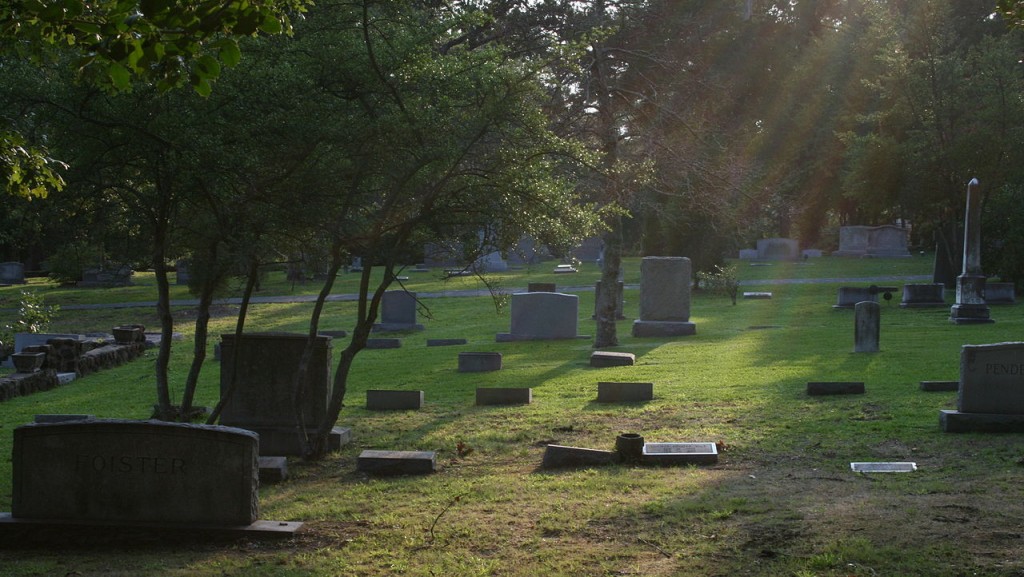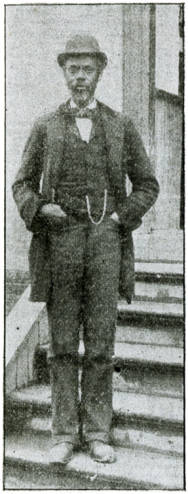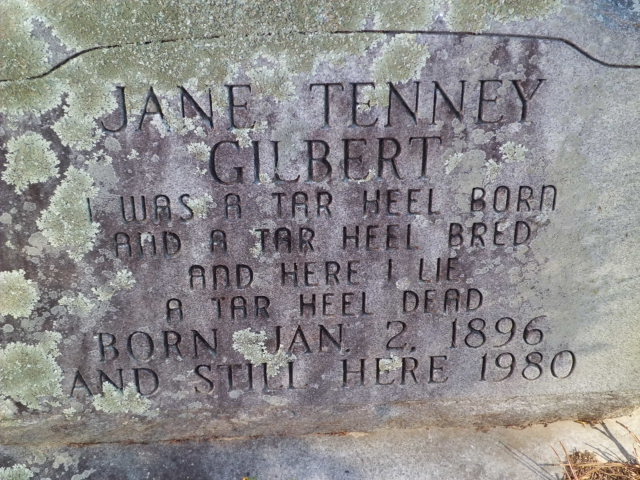On this day in 1994, the Old Chapel Hill Cemetery was placed on the National Register of Historic Places. Carolina’s students, staff, and faculty pass the Cemetery on a regular basis. It is as much a part of the campus as the Arboretum or the Bell Tower. In honor of the 20th anniversary of its addition to the National Register of Historic Places, we’ve made a list of 20 facts about the Cemetery. How many did you already know?

- The original 125 acres was sold to the College in October of 1776 for 5 shillings. That would be $40.65 today!
- The first recorded burial was George Clarke. George was a student from Burke County, NC. He died September 28, 1798. He was also a member of the Philanthropic Society. Although he was the first buried, his stone was not placed until the mid-nineteenth century.
- The Dialectic and Philanthropic Societies were the first to buy plots in the Cemetery. When students passed away and their homes were too far away for quick transport, the respective society would bury the student in their plot. In fact, the Di and Phi Societies were as competitive in burying their members as they were in everything else before they became a united organization. The societies were constantly trying to one-up each other with the erection of monuments in their cemetery plots. The Phi Society once commissioned an eight-foot high Italian Marble monument for a deceased member.
- In 1835, it was officially named the College Graveyard. This did not stop Chapel Hill residents from calling it the “Village Cemetery” though. It was renamed upon the completion of a low wall encompassing the entirety of the property.
- All cemetery plots have already been purchased. The Cemetery isn’t entirely full yet, but plots are off the market!

UNC Chapel Hill recognizes the segregated section of the historic cemetery. - Two sections of the Cemetery were reserved for African Americans and segregated from the other four by a low rock wall. The section was established because there were no black church cemeteries in Chapel Hill. Many of those buried in sections A and B were university laborers and servants who were often slaves or former slaves. The earliest (marked) grave in this part of the cemetery belongs to Ellington Burnett (1831-1853).
- Confederate soldiers were buried in the Cemetery during the Civil War. Their stones are marked with “C.S.A.”
- Like most cemeteries, Chapel Hill’s has had a problem with vandalism. It’s unclear whether or not vandalism has been intentional or accidental. For example, in 1974, 40 to 50 monuments were broken and pushed off their bases. However, in 1985, stones were damaged by football fans eager to get to their seats.
- In 1922, the town of Chapel Hill took over responsibility for maintaining the Cemetery. However, in 1988, ownership was transferred to the University.
- The oldest monument in the Cemetery belongs to the grave of Margaritta Chapman, who died in 1814 at the age of 16. Although George Clarke was the first buried, his monument was not erected immediately upon his death.
- Charles Kuralt is buried in the Old Chapel Hill Cemetery. Before he launched his successful journalism career, Kuralt spent so much time working on the The Daily Tar Heel in his senior year that he ended up failing all of his other classes! Since many of the plots had already been purchased, Charles Kuralt would not have been buried in the Old Chapel Hill Cemetery had the Pickard Family not relinquished a plot.
- The Cemetery holds the graves of more than 800 African Americans. Many of the graves are unmarked. The segregated section of the Cemetery has since been recognized with a sign post remembering those buried there. While many of the graves are still unmarked, the Preservation Society of Chapel Hill did conduct a survey of the segregated area in 2009.

Wilson Caldwell. From the North Carolina Collection Photographic Archives. - Wilson Caldwell is buried in the Old Chapel Hill Cemetery. Born a slave in 1841 to University President David Swain, Wilson was a much recognized member of the Carolina community during his lifetime. When enslaved, Caldwell became the head janitor to the University. After Emancipation, Caldwell stayed in the Chapel Hill area and established a school for African Americans in 1868. He was also elected to the Board of Commissioners of Chapel Hill, bought 12 acres of land, and served as a justice of the peace. In 1884, however, he returned to work for the University and maintained his position as the head of the campus workforce until his death in 1898. Get more information on Wilson Caldwell here.
- Cars used to park on unmarked graves before football games until restrictions were implemented in 1991. We know parking is tight here, but thank goodness we’re showing a little more respect now!
- Several of the monuments in the Di-Phi plots were by the famous 19th Century stone carver George Lauder. Originally from Edinburgh, Scotland, Lauder lived in Raleigh and Fayetteville, NC. He actually owned the largest gravestone factory in North Carolina in the 1800s!
- University trustees almost created a second cemetery in McCorkle Place! When the body of Dr. Joseph Caldwell was moved from the “College Graveyard” to its spot under the monument in McCorkle Place in 1846, the trustees briefly considered creating a new cemetery. The idea never came to fruition though.
- Jane Tenney Gilbert (1896-1980) has the gravestone with the most school spirit. Ever. Her epitaph reads: “I was a Tar Heel born and a Tar Heel bred/and here I lie a Tar Heel dead./BORN JAN. 1896 AND STILL HERE 1980.”
- There is a large sandstone obelisk in Section B, dedicated to the black servants of the University. The obelisk is the original Joseph Caldwell monument from McCorkle Place, which was replaced in the late 19th century by a granite obelisk. It was rededicated in memory of Wilson Caldwell, his father November Caldwell and David Barham and Henry Smith, two other black university servants. Note that even though these men and women were “servants” to the University, some of them were enslaved by families in the area and loaned to the school.
- Five 19th century headstones were tipped over and smashed the day before Charles Kuralt was buried in the cemetery. We’re not sure if the vandalism was in anticipation of Charles Kuralt’s burial or if the timing was incidental. We can’t imagine anyone having THAT much of a problem with Charles Kuralt!
- If you are so inclined, you can have your ashes scattered near the cemetery! Memorial grove was created as the solution to the limited space of the Old Chapel Hill Cemetery. It is UNC’s garden for the scattering and interment of ashes. The garden is reserved for use by individuals with a university affiliation, and for immediate family members of those individuals. Because of the nature of a scattering garden, the space can accommodate an unlimited number of individuals, allowing anyone who wishes to maintain an eternal connection to the university to do so.

Now you know!
